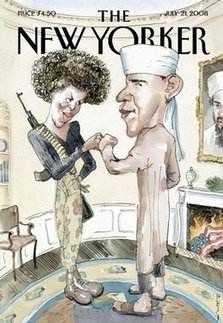|
Reader question:
What does "yellow journalism mean, as in this headline: "Yellow journalism at its worst"?
My comments:
First of all, Yellow journalism is not to be confused with "黃色新聞", which appears to be a handy literal translation but which really does not work. The Chinese yellow (黃色) points to pornography and that is not the case with yellow journalism. Yellow journalism instead is closer to the current Chinese vernacular of "八卦新聞", which means, literally, media gossip.
Confused? You bet.
Just so you may be wary of literal translations^-^.
Now, definitions. Yellow journalism refers to treatment of trivia – celebrity relationship scandals for example – as serious news that results in lowered journalistic standards but increased readership. A large picture of a half naked woman in the front page of a broadsheet newspaper, for example, would be considered yellow journalism everywhere. For a tabloid, this would be standard practice – And tabloids in general embody what constitutes yellow journalism. Yellow journalism is their lifeline. They can not survive without it.
The origin of the term dates back to late 19th century New York, and it used to be called Yellow Kid Journalism, Yellow Kid being a character in a comic strip that for some time appeared in two competing newspapers as cartoon supplements. The cartoons were painted in yellow – those were days of predominantly black and white – and were very, er, eye-catching and popular. And they did help increase sales of the papers for a time. And hence, Yellow Kid Journalism gradually became synonymous to profit-first journalism, or sensationalism aimed at pepping up flagging circulations. Over time, as the Yellow Kid comics died out, Yellow Kid Journalism was shortened to Yellow journalism and the term has stuck since.
Here are recent media examples of what Yellow journalism is about.
1. If it bleeds - it leads. Rumor trumps facts every time. Sensationalism sells.
It's called "yellow journalism."
- W-Five, Paula Todd, and yellow journalism, Rabble.ca, November 14, 2008.

2. Wow! I thought we were in the 21st Century. Obviously, the tabloid escapades of the early 20th century has not totally lost its' place in American journalism. The cover art of The New Yorker (July 21st edition, see picture) is a characterization of the rumors surrounding the Islamic ties of Senator Barack Obama that have been circulating around the internet for over a year. The difference, of course, is that e-mail chains and bloggers do not have the readership or the journalistic history of this publication.
This satirical cover art is an example of Yellow Journalism. For those of you who skipped your American government undergraduate course, Yellow Journalism is defined as sensationalized reporting that lowers journalistic standards in order to increase readership. Clearly, the cover art is meant to increase interest in readership, the question is what kind of long term impact this may have on the presidential race.
Will The New Yorker publish a similar cartoon of John McCain as an irate "Father Time" with his wife popping pills in the background? If not, then it may be proved that the intent of publishing of this cartoon was malicious. Then, Obama can file a libel suit against The New Yorker similar to the New York Times Co. v. Sullivan case of 1964 where the Supreme Court decided that a public official would have to prove actual malice in the publishing of misleading reporting.
Unfortunately, there will be a backlash because of this cover. There will be people who will say to me, "See, I told you Obama was a Muslim and he will destroy the country." Even if The New Yorker did intend to show how far fetched it would be for a sitting United States Senator to be in league with terrorists; the response of those it is trying to enlighten will be eclipsed by the visual on the cover.
Welcome to the world of Yellow Journalism 2008…where a picture is worth a thousand words and Americans do not bother to read more than ten of them.
- Yellow Journalism 101 - The New Yorker Magazine, Examiner.com, July 14, 2008.
我要看更多專欄文章
|